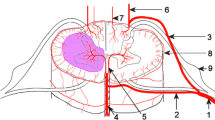Abstract
The spinal cord can be affected by multiple heterogeneous disorders often difficult to diagnose. We describe ten patients affected by a progressive ascending myelopathy with a poor prognosis. The patients, during the follow-up period, underwent neurological examinations, cerebrospinal fluid analysis, hematological, microbiological, auto-antibodies screening, brain and spinal cord magnetic resonance imaging (MRI) and electroneurophysiological study. At disease onset spinal cord MRI showed ≥1 myelopathic lesions extended for <2 segments and then evidenced a progressive spinal cord atrophy without any new lesion. All patients showed an increase of the visual evoked potential P100 latency. All of them showed two or more clinical recurrences of myelitis and then, after a period ranging from 3 to 5 years from the disease onset, a progressive course. Five patients became unresponsive to intravenous high-dose steroid treatments and/or intravenous immunoglobulins and to any other therapeutic attempts, developed a progressive ascending myelopathy to tetraplegia and died from respiratory failure. The other five patients are in progressive phase of the disease with an initial involvement of the upper limbs and show mild cervical spinal cord atrophy at MRI, configuring the early stage of an ascending progressive myelopathy. In our opinion, the more suitable diagnosis is an atypical form of MS although is not possible to exclude a new nosological entity that could be included in the expanding range of spinal cord diseases.


Similar content being viewed by others
References
McDonald WI, Compston A, Edan G et al (2001) Recommended diagnostic criteria for multiple sclerosis: guidelines from the International Panel on the diagnosis of multiple sclerosis. Ann Neurol 50:121–127
Polman CH, Reingold SC, Edan G et al (2005) Diagnostic criteria for multiple sclerosis: 2005 revisions to the “McDonald Criteria”. Ann Neurol 58:840–846
Miller DH, Weinshenker BG, Filippi M et al (2008) Differential diagnosis of suspected multiple sclerosis: a consensus approach. Mult Scler 14:1157–1174
Bhat A, Naguwa S, Cheema G, Gershwin ME (2010) The epidemiology of transverse myelitis. Autoimmun Rev 9:A395–A399
Berger JR, Sabet A (2002) Infectious myelopathies. Semin Neurol 22:133–142
Kincaid O, Lipton HL (2006) Viral myelitis: an update. Curr Neurol Neurosci Rep 6:469–674
Simnad VI, Pisani DE, Rose JW (1997) Multiple sclerosis presenting as transverse myelopathy: clinical and MRI features. Neurology 48:65–73
Wingerchuk DM, Weinshenker BG (2008) Neuromyelitis optica. Curr Treat Options Neurol 10:55–66
Seifert T, Enzinger C, Ropele S, Storch MK, Strasser-Fuchs S, Fazekas F (2005) Relapsing acute transverse myelitis: a specific entity. Eur J Neurol 12:681–684
Sellner J, Hemmer B, Mühlau M (2010) The clinical spectrum and immunobiology of parainfectious neuromyelitis optica (Devic) syndromes. J Autoimmun 34:371–379
Christensen PB, Wermuth L, Hinge HH, Bømers K (1990) Clinical course and long-term prognosis of acute transverse myelopathy. Acta Neurol Scand 81:431–435
Transverse Myelitis Consortium Working Group (2002) Proposed diagnostic criteria, nosology of acute transverse myelitis. Neurology 59:499–505
Katz JD, Ropper AH (2000) Progressive necrotic myelopathy: clinical course in 9 patients. Arch Neurol 57:355–361
Masuhr F, Busch M, Wetzel K, Harms L, Schielke E (2002) Relapsing myelitis with pathological visual evoked potentials: a case of neuromyelitis optica? Eur J Neurol 9:429–432
Schmalstieg WF, Keegan M, Weinshenker B (2010) Solitary focal demyelinating lesion as a cause of progressive myelopathy. Am Acad Neurol Cong P06.199
Wingerchuk DM, Lennon VA, Pittock SJ, Lucchinetti CF, Weinshenker BG (2006) Revised diagnostic criteria for neuromyelitis optica. Neurology 66:1485–1489
Nociti V, Cianfoni A, Mirabella M, Caggiula M, Frisullo G, Patanella AK, Sancricca C, Angelucci F, Tonali PA, Batocchi AP (2005) Clinical characteristics, course and prognosis of spinal multiple sclerosis. Spinal Cord 43:731–734
Gonzalez H, Olsson T, Borg K (2010) Management of postpolio syndrome. Lancet Neurol 9:634–642
Conflict of interest
None.
Author information
Authors and Affiliations
Corresponding author
Rights and permissions
About this article
Cite this article
Nociti, V., Batocchi, A.P., Luigetti, M. et al. Progressive ascending myelopathy: atypical forms of multiple sclerosis or what else?. J Neurol 258, 1965–1970 (2011). https://doi.org/10.1007/s00415-011-6050-9
Received:
Revised:
Accepted:
Published:
Issue Date:
DOI: https://doi.org/10.1007/s00415-011-6050-9




